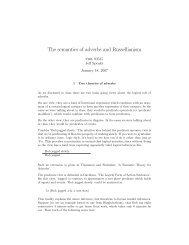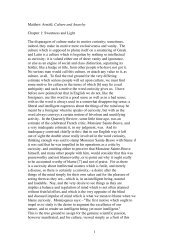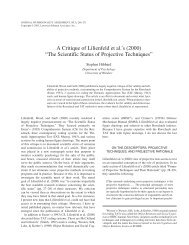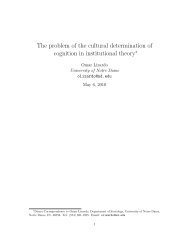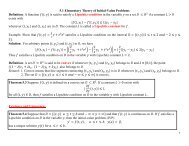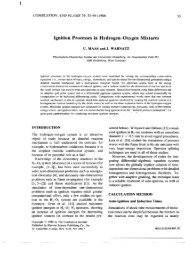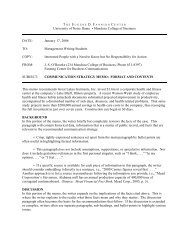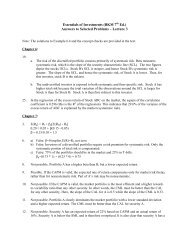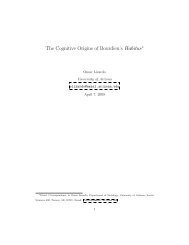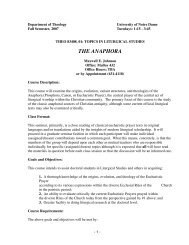Mitigation of Motions of Tall Buildings with Specific Examples of ...
Mitigation of Motions of Tall Buildings with Specific Examples of ...
Mitigation of Motions of Tall Buildings with Specific Examples of ...
You also want an ePaper? Increase the reach of your titles
YUMPU automatically turns print PDFs into web optimized ePapers that Google loves.
(Tamura 1997, Sakamoto 1993, Sakamoto & Kobori 1996), as illustrated by Table 12, followed<br />
by a list <strong>of</strong> buildings in Japan utilizing AMDs, shown in Table 13.<br />
Table 12. Mass supporting mechanisms and actuators for AMDs and HMDs in for 19 <strong>Buildings</strong> in Japan (Kitamura<br />
et al. 1995)<br />
Mass Supporting Mechanism Actuator<br />
Pendulums Including Multiple Type 8 42% AC Servo-Motors and Ball<br />
Laminated Rubber Bearings 7 37%<br />
Screws<br />
6.3.2 Applications <strong>of</strong> Active Mass Dampers (AMDs)<br />
13 68%<br />
Linear Bearings 3 16% Hydraulic Actuators 6 32%<br />
V-Shaped Rail on Rollers 1 5%<br />
Table 13. Japanese Applications <strong>of</strong> AMDs in Actual <strong>Buildings</strong><br />
Name Location Date Height (m)<br />
Kyobashi Siewa Building Tokyo 1989 33<br />
Sendagaya INTES Building Tokyo 1991 44<br />
Hanku Chayamachi Building (Applause Tower) Osaka 1992 161<br />
Riverside Sumida Building Tokyo 1994 134<br />
Herbis Osaka Osaka 1997 189<br />
Kajima Corporation was responsible for the world’s first installation <strong>of</strong> an AMD when it<br />
equipped the 33 meter tall flexible steel Kyobashi Siewa Building (Fig. 19a) <strong>with</strong> such a system<br />
in August <strong>of</strong> 1989 (Koshika et al. 1992). The system, (Fig. 19b) installed to protect the building<br />
from earthquakes and strong winds, is capable <strong>of</strong> responding in 1/100 <strong>of</strong> a second to vibrations<br />
<strong>with</strong> sensors to detect motions and tremors at the ground and in the building, specifically at the<br />
basement, 6th, and 11th floors. Two AMDs were installed by positioning one large AMD unit (4<br />
ton) in the middle to control large oscillations and tremors for the entire building and one smaller<br />
unit (1 ton) to the side to counteract torsion. The 2 damper masses are suspended by a wire rope<br />
and driven by servo hydraulic actuators. Two pumps and an accumulator act as the hydraulic pressure<br />
source for the actuator, providing rapid pressurization and low energy cost. The system,<br />
while only about 1.5% <strong>of</strong> the building's weight, can reduce the response 1/2 to 2/3. A time history<br />
<strong>of</strong> the acceleration <strong>of</strong> the building’s top floor, shown also in Figure 19c, illustrates the reduction<br />
<strong>of</strong> the response under the action <strong>of</strong> wind, limiting the accelerations below perception thresholds.<br />
<strong>Mitigation</strong> <strong>of</strong> <strong>Motions</strong> <strong>of</strong> <strong>Tall</strong> <strong>Buildings</strong> <strong>with</strong> <strong>Specific</strong> <strong>Examples</strong> <strong>of</strong> Recent Applications 28



